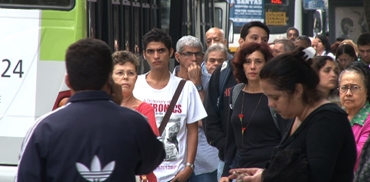It’s after midnight in Buenos Aires. Flickering lights from television sets can be seen in homes near Chass Park. Down the street, in a mid-sized building, the light from a lamp burns, unwavering. Through the window, we can see a 33-year old computer programmer at his desk.
Andrés Quijano worked at that desk for a month to develop the app –Ecofacts—which earned him first place in the World Bank’s “Apps for Climate” competition. He beat competitors from across the world. “You can create a good app from anywhere in the world...although, obviously, it is much easier if you live in Silicon Valley,” he said when asked about the possibilities for developing his skills in Argentina.
At the other end of Latin America, in sunny Cali, Colombia, engineer Ernesto Girón also developed an application that earned him a place among the competition’s 15 finalists. With his 15 years of computer programming experience, he designed WBPanorama, which amongst other functions predicts the air temperature over the next several years. Although his hometown beckons him, Ernesto admits that he is tempted to pack his bags and go to the United States, where salaries are higher and there are more opportunities for employment in the new technology sector. “Research in Latin America is limited and few companies offer work,” he says, discouraged.
Andrés and Ernesto are two outstanding examples of the growing number of highly-skilled professionals in the region, especially in the area of new technology. This sector has increasing relevance worldwide. Besides late nights, cups of coffee and computer code, the two men are joined in their desire to share their specialized knowledge with the general public.
Although our two protagonists live in their home countries, they are torn between leaving and staying when considering how best to develop professionally. Low salaries, limited professional recognition, possible unemployment and a lack of support for research make it difficult to stay.
Bolivian Álvaro Molina faces a similar situation. He, too, was a finalist in the “Apps for Climate” competition, thanks to his FuelECOnomics website, which compares pollution levels of 45,000 models of cars and calculates fuel costs and carbon footprints of different routes.
These three Latin Americans developed software applications that stood out among the entries in an international contest; nevertheless, their future employment situation is far from stable.

